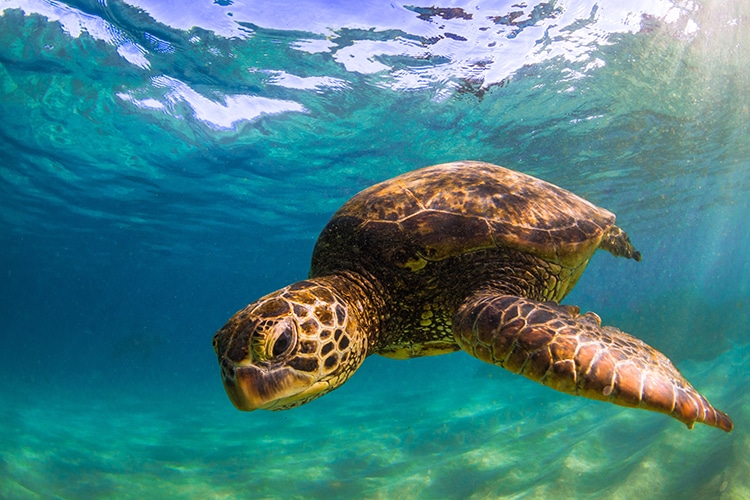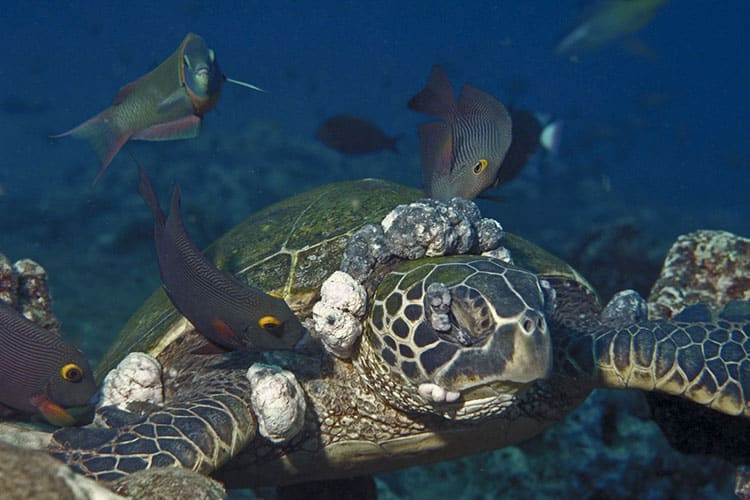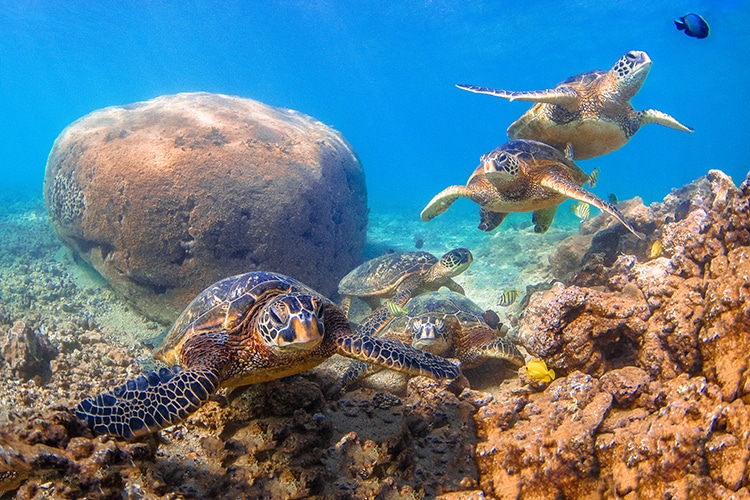While the tumors themselves are not dangerous, they can block breathing and eating, leading to tragic results.
He wanted to figure out what was activating the FP in Hawaii’s turtles himself.
He applied for permits to biopsy the turtles' tumors, but was denied his request.

Photo: Shanemyersphoto.com/Depositphotos
Undeterred, he set up a data pipe of underwater motion-sensing cameras to survey the turtle population.
This Hawaiian green turtle is severely afflicted with fibropapillomatosis.
The mouth tumors are unique to Hawaiian greens.

This Hawaiian green turtle is severely afflicted with fibropapillomatosis. The mouth tumors are unique to Hawaiian greens. (Photo:Peter Bennett & Ursula Keuper-Bennett viaWikimedia Commons,CC by 3.0.)
(Photo:Peter Bennett & Ursula Keuper-Bennett viaWikimedia Commons,CC by 3.0.)
There are over 83,000 cesspools in Hawaii.
Fifty-two million gallons of untreated sewage are released into the ground each day in Hawaii.

Photo: Shanemyersphoto.com/Depositphotos
Along with increasing skin and gastrointestinal infections among beach-goers, wastewater includes a high amount of nitrogen.
The inquisitive teen started collecting and processing algae samples to be measured by a lab’s mass spectrometer.
The spectrometer confirmed Springer’s suspicions about arginine levels in the turtles' main source of grub.

Majestic Ka’a’awa mountain and lovely Kāneʻohe Bay (Photo:Eric Tessmer/Wikimedia CommonsbyCC 2.0)
Additionally, he received the Peggy Scripps Award for Science Communication, giving him $10,000 towards his education.
Springer plans to study marine biology at Orgeon State University in the fall.
He’s hoping that his project will help bring attention to the urgent crisis in Hawaii.
The state has committed to replacing all cesspools by 2050.